
About Andrew Cusack
 Writer, web designer, etc.; born in New York; educated in Argentina, Scotland, and South Africa; now based in London.
Writer, web designer, etc.; born in New York; educated in Argentina, Scotland, and South Africa; now based in London. read more
News
Blogs
Reviews & Periodicals
Arts & Design
World
France
Mitteleuropa
Knickerbockers
Argentina
The Levant
Africa
Cape of Good Hope
Netherlands
Scandinavia
Québec
India
Muscovy
Germany
Academica
Government Buildings, Dublin
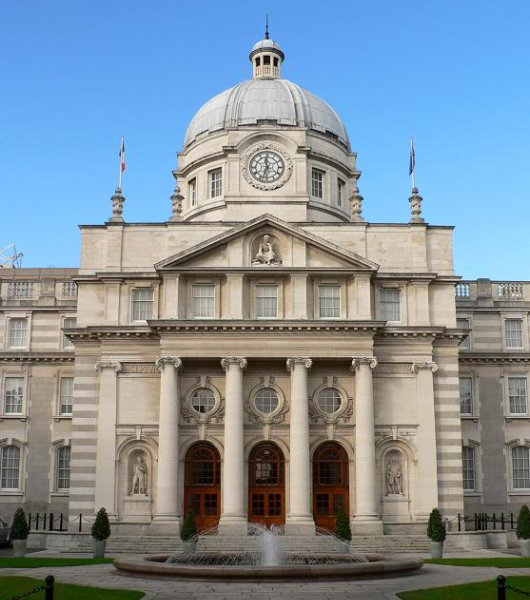
Image: GrahamH
On Upper Merrion Street at the end of Fitzwilliam Lane in Dublin sits a thoroughly Edwardian pile which has been given the thoroughly boring title of ‘Government Buildings’. The city ceased to be a legislative capital in 1800 when the Irish Parliament voted to abolish itself and join the United Kingdom, so government edifices constructed during the nineteenth century lacked the proud stateliness of the Grattan era. The Westminster parliament finally conceded the principle of Irish home rule in 1914 but disastrously suspended its implementation due to the First World War. In stepped the Irish Volunteers, Easter 1916, the IRB, and all that and by the time the Treaty of Versailles ended the conflict on the continent, Britain was up to her neck in troubles in Ireland. Events had intervened and the unimplemented concession of home rule proved insufficient to quell the dire situation.
Even so, the Government of Ireland Act 1920 partitioned the island and created a separate government for ‘Southern Ireland’ and ‘Northern Ireland’, each with its own devolved legislature. The old Irish Parliament House had been sold to the Bank of Ireland so there was a question as to where the two houses of the new Southern Irish body would convene. Eventually the government decided upon this building, the Royal College of Science, and it was commandeered for that purpose.
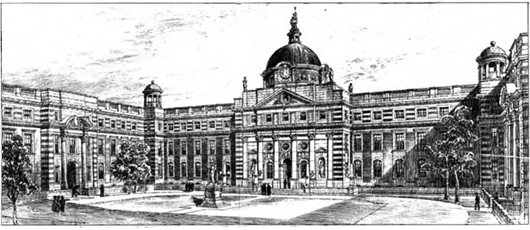
The Royal College of Science was the last significant public building of the British era in Dublin’s history. Edward VII laid the foundation stone in 1904 and was opened by George V in 1911. Sir Aston Webb, a capable but far from excellent architect best known for the current façade of Buckingham Palace, designed the complex on the site of a row of Georgian townhouses that were demolished one-by-one as the structure was sequentially completed.
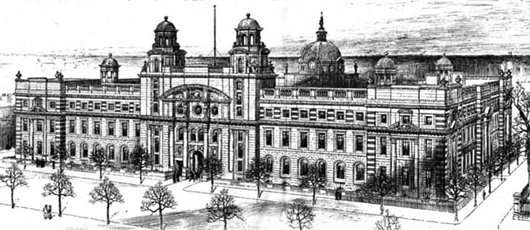
Interestingly, the original plans included a full façade on Merrion Street (above), whereas the final execution (below) features a gap allowing the central dome to be viewed from the street and Fitzwilliam Lane. Neither design is entirely satisfactory. One imagines the composition would have been more successful had the Merrion Street side been left open as a large forecourt rather than partially enclosed as a demi-courtyard. Space in central Dublin was at a premium, however, and the Royal College of Science wanted to make as much use of their site as they could.
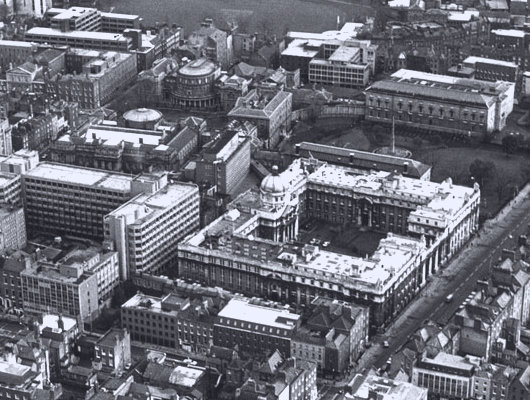
After the Irish Free State was created, the Dáil Éireann chose to meet in the Royal Dublin Society’s lecture hall, part of the Leinster House complex adjacent to the Royal College of Science. While various proposals were made on where to site permanently Ireland’s new parliament, the TDs & Senators got comfortable at Leinster House and the government purchased the building from the RDS. Encumbered as Leinster House is by the National Library and the National Museum on either side, the government expanded into the Royal College of Science building. The RCS was subsumed into University College Dublin in 1926 but the engineering faculties remained on Merrion Street in what was know increasingly known as ‘Government Buildings, Dublin’.
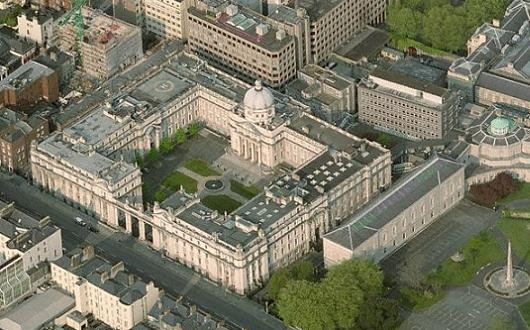
From 1921 onwards, the government gradually took over more and more of the complex until finally in 1989 the engineers were kicked out. Charlie Haughey happened to be Taoiseach of Ireland at the time and commissioned a wholesale renovation of the structure to finally complete the transformation from technical institute to center of administration. He even had a heliport put on the roof, but (to Haughey’s disappointment) the Air Corps pilots had a devil of a time landing on it and it eventually fell into disuse. The high public expenditure on the project at a time of relative economic hardship in Ireland was controversial, and some took to nicknaming the Taoiseach’s pet project ‘the Chaz Mahal’. The renovation did, however, win the Silver Medal for Conservation awarded by the Royal Institute of the Architects of Ireland.
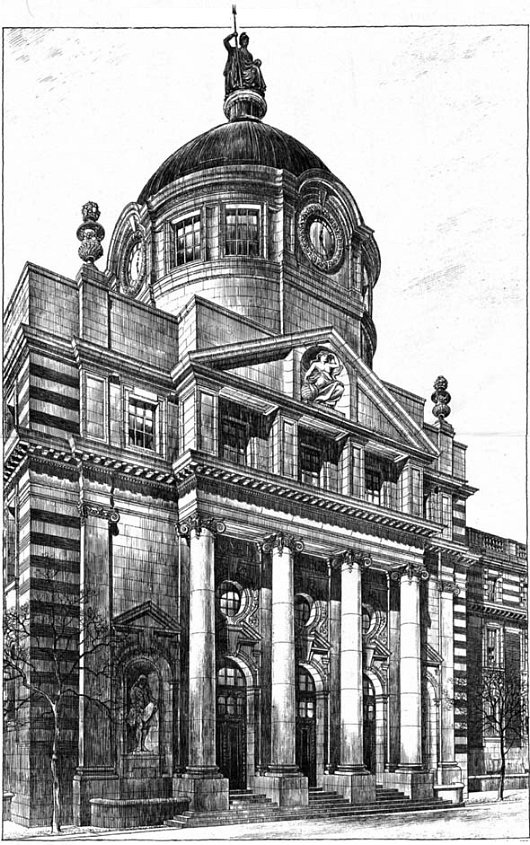
Search
Instagram: @andcusack
Click here for my Instagram photos.Most Recent Posts
- Burns Tower April 19, 2024
- Patrick in Parliament March 18, 2024
- Articles of Note: 13 March 2024 March 13, 2024
- Cambridge March 9, 2024
- Taken on Trust March 4, 2024
Most Recent Comments
Book Wishlist
Monthly Archives
Categories



‘Tis a lovely pile indeed. Looks like a riff on Sir Christopher Wren’s Old Royal Navy College with a soupçon of the spirit of Sir Herbert Baker. Lord Webb may not be a Sir Edwin Lutyens, but by the looks of it he’s deserving of a monograph.
Sir, not Lord — Webb was a mere knight.
Leinster House, Ireland’s current parliament building looks rather underwhelming compared to Government Buildings, but then Leinster House was built as a country house for the Duke of Leinster before Dublin expanded to encroach upon its domain.
Needless to say, a post on Leinster House is in the works.
Was the statue of (presumably) Britannia which crowns the dome in the artists’ illustrations ever built? Was it removed by the Dublin authorities following independence?
I stand corrected!
Leinster house is still infinitely superior to the new Scottish Parliament. Has that awful mess been properly denounced in this blog?
I think one must, in the main, concur with your assessment.
However Sir Aston Webb’s sensitive restoration and reworking of the Priory Church of Saint Bartholomew the Great, Smithfield, London was most certainly ‘capable’ and has indeed a whiff of the ‘excellent’.
I didn’t realise Leinster house practically backs up to Government Buildings. Lets not forget that James Hoburn who designed and built the white house, Washington DC. modelled it on Leinster House Dublin. You can see a striking resemblance between the two buildings. The white house adding its portico at a later date.